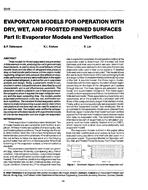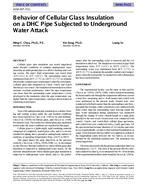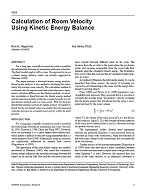Click here to purchase
Time-varying ventilation is emphasized in the in recently published ASHRAE Standard 62.2 2016 and “Equivalent Ventilation” method has been proposed as a guideline for variable ventilation design. Potentially, this method could be used to evaluate the effectiveness of unsteady wind induced airflow and thus better integrate it in the ventilation design. However, to implement wind forced natural ventilation as a variable ventilation strategy, the knowledge and understanding of temporal variation of both wind direction and speed is essential. As a preliminary investigation, the periodic and cyclical behavior of wind speed is observed by applying the Fast Fourier Transform to one-minute wind data of New York and Austin. The wind speed exhibits annual and diurnal cycles and other cyclical behaviors in both cities, based on which, “seasons” are defined. Moreover, for relatively high wind speed, wind direction seems less variable. The magnitude of wind direction changes during small time periods are examined to determine the appropriate length of the averaging period for wind speed. The one-hour averages are proved to be sufficient for these two wind datasets and the reason is twofold: first, the majority of wind direction variations (more than 60%) is less than 15 degrees (arbitrarily considered as sufficiently small) at this time interval; second, when the one-hour averages is observed for 24-hour, the significant cyclic behaviors of daily wind speed are preserved. The airflow rate estimated by one-hour averaging wind speed and mode of wind direction using orifice equation agree with those computed by original one-minute wind data, therefore, wind data at one-hour resolution has the potential to capture the variation of wind speed .
Citation: 2019 Winter Conference, Atlanta, GA, Conference Papers
Product Details
- Published:
- 2019
- Number of Pages:
- 8
- Units of Measure:
- Dual
- File Size:
- 1 file , 3 MB
- Product Code(s):
- D-AT-19-C070


